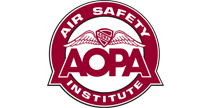Unseen danger
(CEN09MA019)
 By David Jack Kenny
By David Jack Kenny
“See and avoid.” The principle is drilled into students from the very first flight lesson: The pilot in command is responsible for avoiding obstacles. If darkness or poor visibility makes obstructions difficult to see, the only prudent choices are to climb to altitudes safely above them, or choose a route well clear of any obstructions you can’t get above. Unfortunately, even expert aviators can sometimes be distracted from giving enough thought to these choices—particularly under time pressure in busy airspace at night.
Just before midnight on Oct. 15, 2008, a Bell 222 helicopter hit a 734-foot radio tower in Aurora, Ill. The EMS flight was carrying a child from the Valley West Hospital in Sandwich to Children’s Memorial in Chicago, a straight-line distance of only 38 nm. The 69-year-old commercial pilot, paramedic, flight nurse, and 14-month-old patient were killed.
Three minutes before the crash, the pilot contacted the DuPage Airport control tower to request transit through its Class D airspace, reporting his position as “over Aurora.” Radar data indicated that the helicopter maintained a straight track at a constant altitude of 1,300 feet msl until impact, which occurred just 50 feet below the tower’s top. Its course followed the direct line between the departure and destination heliports. As the NTSB investigators noted, “The radio station tower was depicted on the Chicago Aeronautical Sectional Chart, the Chicago Visual Flight Rules Terminal Area Chart, the Chicago Helicopter Route Chart, and as an obstruction on the air traffic controller’s radar display,” and was marked with two sets of high-intensity strobe lights. Visibility at the time of the accident was 9 to 10 miles. The investigators also observed that the helicopter was equipped with a Garmin GNS 430 GPS and an autopilot, but not a Terrain Awareness and Warning System.
The pilot had more than 3,500 hours of flight time, almost 90 percent of it in helicopters, going back to his service in the Vietnam War. The company’s director of flight operations described him as conscientious and meticulous, and he appeared to be well rested the day of the accident. His most recent line check had been interrupted by a patient transport call, which he’d flown according to the company’s operating manual. He had used the autopilot during the en route segment of that flight.
The NTSB’s finding of probable cause cited the pilot’s inadequate flight planning in his choice of route and altitude, but also faulted the tower controller for failing to warn the pilot of the obstruction. The majority pointed out that the controller could see the tower’s location on the radar scope, was supposed to have memorized its height and position during training, and was not working any other traffic at the time. This prompted an unusual dissent from the board’s vice chairman, who warned against undermining the message that “For VFR pilots, seeing and avoiding obstacles is solely and exclusively the responsibility of the pilot in command . . . with no exceptions.”
It’s unlikely that such an experienced pilot would have relied on ATC to keep him clear of obstructions while flying VFR; a brief mental lapse seems more plausible. Perhaps his focus on moving a sick child led him to overlook that crucial detail. But confusion over the relative roles of pilot and controller has been known to lead to tragedy. In an emergency, ATC can be a pilot’s best friend—but whether the risk is thunderstorm penetration, deteriorating weather, obstacle clearance, or even an unsuitable runway assignment, only the person handling the flight controls can get that aircraft safely back on the ground.
Related Links
"Terrain Avoidance" Safety Brief
"Comfortable and Complacement," December 2009 AOPA Pilot
"Going Bump in the Night," August 2004 AOPA Pilot